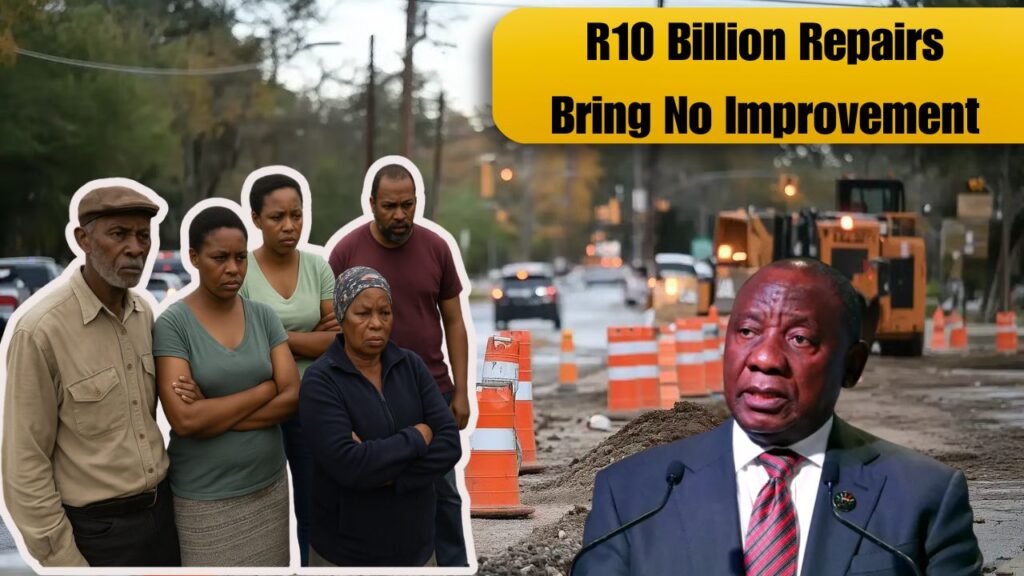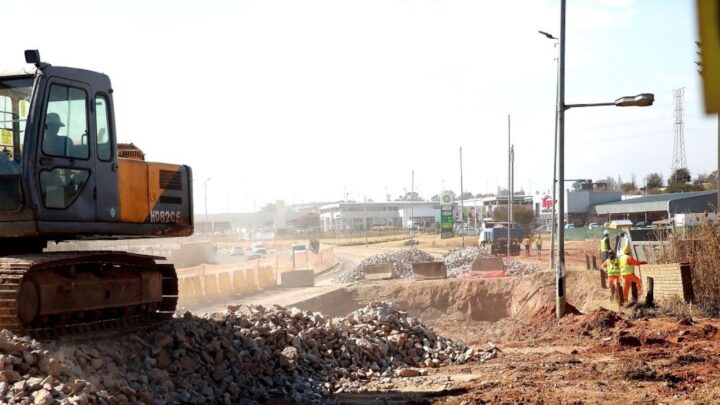South Africa has invested a staggering R10 billion in infrastructure repairs over the past few years, yet millions of citizens continue to endure constant service failures. From power outages and water disruptions to collapsing municipal systems, the daily struggle persists despite government promises. Experts say the country’s ageing infrastructure, poor maintenance, and mismanagement are at the heart of the problem. Many South Africans question where the money has truly gone, as communities across provinces like Gauteng, Limpopo, and the Eastern Cape still face unreliable electricity, broken roads, and dry taps almost every week.

Billions Spent, But Little Relief for South Africans
While the R10 billion investment aimed to restore essential infrastructure such as power grids, water networks, and roads, the results have been disappointing for everyday citizens. Reports reveal that much of the funding was used for emergency patchwork repairs rather than long-term structural upgrades. In several provinces, contractors left projects unfinished or poorly executed, causing repeated breakdowns within months. Residents in urban and rural areas alike continue to report daily power outages, burst water pipes, and pothole-ridden roads. The lack of visible improvement raises serious concerns about accountability and transparency in public spending.
Experts Blame Corruption and Poor Maintenance Culture
Infrastructure experts in South Africa warn that corruption, poor planning, and inadequate maintenance are the key reasons why service failures persist. According to municipal engineers, funds are often misallocated or spent on non-priority projects, while critical systems like water treatment plants and electricity substations are neglected. The result is a continuous cycle of breakdowns that cost taxpayers billions each year. The government’s Infrastructure Investment Plan was meant to create lasting improvements, but without strict oversight and technical efficiency, citizens remain trapped in a loop of inefficiency and frustration.
 Rand Plummets to R18.23: Brace for Impact on Salaries, Transport, and Essentials This October
Rand Plummets to R18.23: Brace for Impact on Salaries, Transport, and Essentials This October
Impact on Communities and Local Economies
The ripple effect of failing infrastructure goes far beyond inconvenience — it’s crippling local economies and deepening social inequality. Businesses are forced to shut down during power and water cuts, leading to job losses and higher prices for goods. Schools and hospitals struggle to operate without basic utilities, putting vulnerable citizens at risk. Rural communities suffer the most, often waiting weeks for municipal teams to restore water or electricity. As frustration grows, protests have erupted in several municipalities demanding accountability, improved maintenance, and better service delivery for all South Africans.

Breakdown of R10 Billion Infrastructure Spending
The table below outlines how the R10 billion infrastructure repair fund was distributed across major sectors in South Africa and the visible outcomes of these expenditures.
| Sector | Allocated Budget (in R billion) | Primary Goal | Current Outcome |
|---|---|---|---|
| Electricity & Power Grid | 3.5 | Reduce load shedding and upgrade substations | Frequent outages continue; minimal improvement |
| Water Infrastructure | 2.1 | Repair burst pipes and improve water supply | Persistent leaks and water rationing |
| Road Maintenance | 1.8 | Fix potholes and damaged highways | Ongoing deterioration in rural areas |
| Municipal Facilities | 1.2 | Upgrade waste systems and local offices | Incomplete or delayed projects |
| Emergency Disaster Repairs | 1.4 | Rebuild flood-damaged infrastructure | Slow progress; many areas unrepaired |
FAQs
1. Why are South Africans still facing service failures after R10 billion in spending?
Because much of the funding was used on temporary fixes and poorly managed projects.
2. Which provinces are most affected by infrastructure breakdowns?
Gauteng, Limpopo, and KwaZulu-Natal have reported the highest number of daily outages and water cuts.
3. What are experts suggesting to solve the crisis?
Experts call for stronger accountability, independent audits, and prioritizing preventive maintenance.
4. Is more funding expected for infrastructure improvements?
The Treasury plans to release an additional R5 billion in 2026, but oversight remains a major concern.





